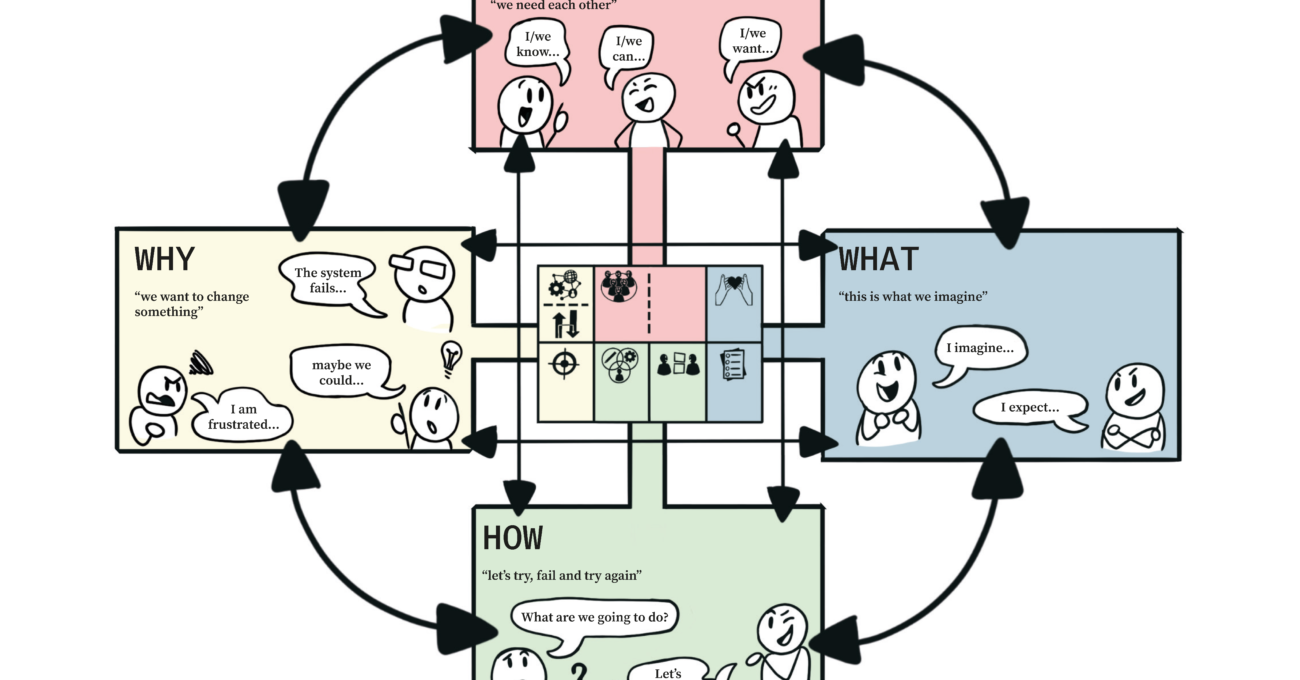
Initiated and facilitated by empathic co-design expert Wina Smeenk, inspired by and based on the Design Choices Framework for Co-creation Projects by Lee et al. (2018), and co-designed and tested in two rounds of iterations, Cube developed the Co-Design Canvas – a one page tool for social change.
The Co-Design Canvas aims to connect people on a deeper level, by utilising their collective wisdom to act together. It is first and foremost a conversation tool that can help by facilitating an open and transparent dialogue about each other’s experiences and interests, managing expectations, being empathic, and talking about knowledge, power and shared responsibilities in both planning, conducting and assessing a co-design process. The canvas does so by making the process and the different elements that affect the process more explicit for all stakeholders involved. It can thus be a tool for policy makers who want to engage citizens and other stakeholders or the other way around, by providing a shared language and clear starting point.
The Co-Design Canvas is initially designed as a physical conversation tool, consisting of eight cards that represent eight variables influencing the co-design process: the context, the (initial) purpose of change, the stakeholders, the results, the impact, the co-design focus, and the co-design settings and activities. These variables do not only affect the process as such, but are also interconnected. The stakeholders, for instance, decide on the co-design focus, and the focus in return determines which stakeholders need to be involved. And then who is involved affects which results and impact are desired and viable, etc.
The design of the canvas aims to provide a flexible and accessible tool, that can be used in different ways depending on the context and the needs within different stages of the process. The cards can be discussed separately, in different orders, to not overwhelm participants with the complexity of the entire process. The filled cards can then be put together into one canvas, to understand the bigger picture and address the relations between the different variables. On the front side of each card, guiding questions help to stimulate the discussion. There is room to write or draw or put sticky notes on the cards. The back sides of the cards explain the variables, give tips and tricks, and suggest additional tools from the SISCODE toolbox, and other design thinking and social innovation methods.
In short, the Co-Design Canvas aims to connect all the variables that define and affect a co-design process and it can guide and facilitate an open conversation between multiple stakeholders. This requires shaping the conditions of having a conversation in the first place. Once different stakeholders are willing to start a conversation, the canvas can help them by providing a shared language, to better understand each other, and to align expectations and thus to literally get everyone on the same page.
The Co-Design Canvas, including an accompanying manual, is currently being translated from Dutch to English and will soon be available for download on this website!
– written by Anja Köppchen –